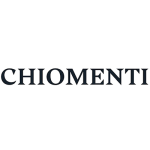
In 2016 the Italian government adopted several initiatives and reforms, providing for, inter alia, the introduction of a state guarantee on the senior tranche of asset-backed securities (ABS) collateralised by Italian non-performing loans (NPLs) via the Garanzia Cartolarizzazione Sofferenze (GACS). The tool openly incentivised the disposal of NPLs from Italian banks through securitisation transactions.
The introduction of the GACS was coupled with other measures including (i) the improvement of Italian bankruptcy and enforcement proceedings, aimed at reducing the length of the recovery procedure and at simplifying the auction process; and (ii) the introduction of new forms of security interest to streamline the enforcement process, by bringing it outside the courts (reducing both the court workload and the lengthy timing for the debt recovery). In addition, the legal and regulatory framework has facilitated access to the credit market by European alternative investments funds (now allowed to lend directly to Italian borrowers subject to certain regulatory requirements).
Despite all these new changes, the pressure to make the Italian NPL market more investor-friendly has not decreased. While discussions at European-level on the constitution of bad banks funded with public resources continue, the momentum of reforms at the Italian-level is still high.
Investor interest in Italian NPLs is still considerable: since the start of 2017, Italian NPLs with a combined amount of nearly €40 billion ($47.2 billion) (in terms of gross book value) have been transferred from Italian originators.
But the stock of NPLs on the books of Italian banks remains high. A key factor hindering investment in Italian NPLs is the inefficiency of recovery, enforcement and insolvency proceedings. The latest reform put in place by the Italian government has tried to further improve the role and the powers of the Italian securitisation vehicles by enabling them to perform certain additional activities with more direct access to the assets backing the ABS.
The latest amendments to Law 130, the Italian securitisation law, enacted on June 24 2017, are specifically designed to increase the scope of action of Italian securitisation vehicles to facilitate (i) the securitisation of bank debt vis-à-vis borrowers subject to debt restructuring schemes, (ii) the securitisation of non-performing financial lease receivables backed by real estate or other registered assets; and (iii) the acquisition of the mortgaged real estate in the frame of securitisation of non-performing mortgage loans.
Securitised loans subject to debt restructuring
The first set of changes provides Italian securitisation vehicles with a more flexible scope of action to better exploit investment opportunities with borrowers in financial distress. So far, the activities of Italian securitisation vehicles were limited, by law, to the purchase of receivables or debt instruments. Lending is also permitted but subject to certain stringent requirements, including the involvement of a bank or a financial intermediary as sponsor. This is also to address issues of risk retention requirements since in the case of direct lending from a securitisation vehicle, no entity could be classified as originator.
According to the new provisions of Law 130, Italian securitisation vehicles will now be able to grant new finance to the securitised NPLs' debtors to restore their financial soundness. In addition, and more importantly, securitisation vehicles are now allowed to purchase and/or subscribe shares, quotas, hybrid and profit participation instruments issued in the context of pre-insolvency or workout schemes. This last aspect is a significant novelty for Italian securitisation vehicles which will now be capable of participating in debt-for-equity swap arrangements or of being employed by investors in loan-to-own strategies for the acquisition of distressed borrowers. Furthermore, Law 130 expressly provides that any financing granted by a securitisation vehicle in the context of pre-insolvency or workout schemes would not be subject to the statutory subordination otherwise applicable to shareholder loans.
The above legal changes should provide an incentive for Italian banks to adopt a forward looking approach to tackle in advance loans which are not non-performing but show clear signs of financial difficulties (the so-called unlikely to pay exposures). On the one hand, disposing of such exposures in a timely manner would help to keep the level of NPLs under control. On the other, it would require the disposing banks to put loans in the market which have not been subject to any substantial devaluation. In this respect, de-recognition of such assets might prove to be too expensive.
Easier access to the underlying assets: non-performing financial leasing and ReoCos
The second set of changes was designed to give Italian leasing companies access to securitisation structures in order for them to dispose of their stock of NPLs. Prior to such changes, the securitisation of non-performing receivables arising from leasing agreements (predominantly real estate assets leasing) was not appealing to investors since a securitisation vehicle was allowed to purchase the receivables arising from a leasing agreement but not the underlying leased asset itself. Investors often look at the financial asset (ie the receivables) to get access to the underlying asset (ie the real estate). According to the new provisions of Law 130, it is now envisaged that any asset subject to a leasing agreement or to a security granted to secure the securitised loan (namely real estate and registered movable assets) could be purchased, managed and developed by a separate Italian vehicle (ie other than the securitisation vehicle) whose core business would be the management of such assets in the exclusive interest of the securitisation vehicle. The separate vehicle should also be able to acquire the entire contractual position of a lessor under a financial leasing agreement (including the ownership of the leased asset): in such a case, the dedicated vehicle should then be included in the consolidated financial statement of a bank (even if not part of a banking group). It is indeed important to consider that financial leasing is an activity reserved for banks and financial intermediaries, and it was therefore necessary that the step-in of such a dedicated vehicle in the position of lessor would require the dedicated vehicle to be consolidated in the financial statement of a bank.
In this respect, the recent changes seem to reflect the practice of certain investors who, in the frame of securitisations of NPLs collateralised by real estate assets, have set up specific real estate companies (real estate operating companies or ReoCos) which would acquire the relevant real estate asset in the frame of the enforcement proceedings when the auction value is expected to be below the purchase price of the corresponding securitised loan. The new provisions of Law 130 expressly set out that any amounts arising from the management and the disposal of such assets at the ReoCo vehicle level will be treated as collections and will be included in the cash flow of the securitisation transaction.
|
|
Securitisation vehicles will now be able to grant new finance to the securitised NPLs’ debtors to restore their financial soundness |
|
|
The above provisions would therefore improve the efficiency of the enforcement proceedings rendering the recovery process more efficient and expedient since the securitisation vehicle, through the separate ReoCo vehicle, could play an active role as potential bidder in the frame of an auction sale of a mortgaged real estate. According to the Bank of Italy, nearly three-quarters of Italian NPLs are secured by real estate property, and in most cases, they appear to have a market value sufficient to cover the relevant debt exposure.
However, it should be noted that there are still many aspects that remain unclear in the new provisions with respect to the introduction of a ReoCo vehicle in the frame of an Italian securitisation structure.
For instance, it is unclear whether the ReoCo vehicle can be incorporated and wholly-controlled by the securitisation vehicle (ie the vehicle issuing the ABS). The provisions do not touch the point and therefore there is no explicit restriction. This would constitute an exception to the exclusive corporate object of an Italian securitisation vehicle.
A more viable route is to have the ReoCo vehicle incorporated and participated in by the same investors subscribing to the asset-backed notes issued by the securitisation vehicle.
In any event clarifying which entity can set up the ReoCo vehicle (eg the investors rather than the securitisation vehicle, or the entities holding the share capital of the latter) would be key in order to solve two other issues not addressed by the new provisions: how the ReoCo vehicle is supposed to fund the purchase of the assets and how investors in the ABS can participate in investment decisions at the ReoCo vehicle level. The new provisions of Italian Law 130 do not provide any guidelines on the contractual relationship which needs to be set up between the two vehicles (the securitisation vehicle and the ReoCo vehicle) while it is provided that the proceeds arising from the activities of the ReoCo vehicle must be dedicated to payment obligations of the securitisation vehicle.
Nothing is said on the link between the two entities. The solution of having the ReoCo vehicle incorporated and controlled by the securitisation vehicle itself would seem, from a structural standpoint, the smoothest solution. The above-mentioned legal uncertainties (and some tax issues) need to be cleared to make such a solution viable. In addition it is not clear whether the activities of the ReoCo vehicle would be subject to the supervision of the master servicer appointed in the frame of the securitisation transaction as is the case for all the activities carried out by the securitisation vehicle.
It should be finally considered that the new provisions added to Law 130 expressly provide that, in the case of the securitisation of NPLs arising from lease agreements with assignment to the securitisation vehicle of the entire contractual position of the lessor (ie not just the receivables arising from the lease agreement), a specific ReoCo vehicle would have to be incorporated with respect to each securitisation transaction. The ReoCo vehicle must be liquidated once the securitisation is unwound.
Simplified transfer formalities for NPLs
In addition to the above, as a further incentive to the securitisation of non-performing receivables, a simplified publicity and registration formalities regime (already provided under Law 130 for certain kinds of commercial receivables) will apply also in case the assigned non-performing receivables are not identified as a pool.
Under the previous regime receivables in a portfolio to be securitised had to be identified by the application of common selection criteria agreed by the originator and the securitisation vehicle and not on a list basis. According to the new provisions it is now possible to transfer a pool of receivables without adopting selection criteria provided that the transfer is registered with the register of enterprises and the transfer notice is published in the Italian Official Gazette simply indicating the names of the assignor and of the assignee, the date of assignment, the type of receivables, the origination period and the website where the assignor and the assignee will make available to the assigned debtors information on the assigned receivables and, upon request, confirmation of the transfer of a specific receivable. As for any transfer of receivables usually performed according to Law 130, any security and/or registration on public registers (such as registered transfer deeds of real estate assets subject to a lease agreement) will remain valid with respect to the assignee without the perfection of any additional formalities but those indicated above.
Key takeaways
The recent changes would certainly constitute a step forward in creating a more efficient market for investors looking at Italian NPLs. There are still many issues which need to be clarified and, in this respect, the recent lawmaking exercise shows some deficiency.
It has been confirmed that adopting an Italian securitisation structure is still the most efficient route to invest in such assets and it is not by chance that many funds invest in Italian NPLs through Italian securitisation vehicles rather than directly or through foreign securitisation vehicles. The added flexibility provided to Italian securitisation vehicles should also facilitate the investment in single name distressed loans where investors need to be able to adopt a very broad spectrum of solutions to extract value: profit participation instruments, debt-to-equity swaps, debtor-in-possession finance etc. Real estate, shipping and renewable energy are the business industries where more transactions of this kind are expected in the coming months.

|
Carmelo Raimondo Partner Chiomenti (Milan) |
|

|
Alessandra Tubi Associate Chiomenti (Milan) |


